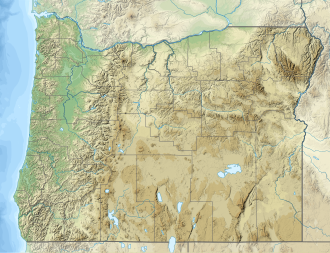| Odell Lake | |
|---|---|
 The lake at sunrise | |
| Location | Klamath County, Oregon |
| Coordinates | 43°34′22″N121°59′54″W / 43.57278°N 121.99833°W [1] |
| Type | natural lake without dam |
| Primary inflows | Trapper Creek |
| Primary outflows | Odell Creek |
| Catchment area | 37 sq mi (96 km2) [2] |
| Basin countries | United States |
| Max. length | 6 mi (9.7 km) |
| Max. width | 1.5 mi (2.4 km) |
| Surface area | 3,582 acres (1,450 ha) [2] |
| Average depth | 132 ft (40 m) [2] |
| Max. depth | 282 ft (86 m) [2] |
| Water volume | 473,900 acre⋅ft (0.5845 km3) |
| Residence time | 8 years [2] |
| Shore length1 | 13.3 mi (21.4 km) [2] |
| Surface elevation | 4,787 ft (1,459 m) [2] |
| References | [2] |
| 1 Shore length is not a well-defined measure. | |
Odell Lake is located near Willamette Pass in the northwest corner of Klamath County, Oregon, United States. It is one of several lakes in the Cascade Range in Central Oregon, and lies within the Deschutes National Forest. It was named for Oregon Surveyor General William Holman Odell by Bynon J. Pengra, in July 1865, while they were making a preliminary survey for the Oregon Central Military Road, which would later become Oregon Route 58. [3] The lake fills a basin carved by a glacier, and the resulting terminal moraine confines the water along the lake's southeast shore. [3]
Contents



